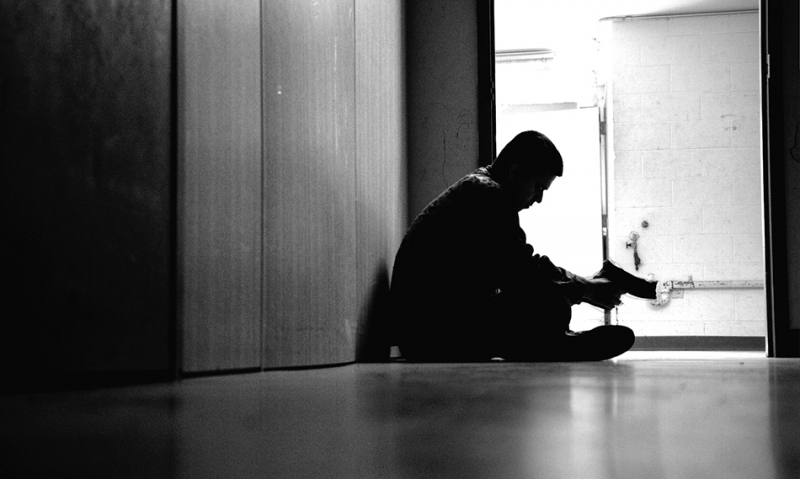
Shulkin: ‘Every veteran suicide is a tragic outcome’
The Senate Committee on Veterans' Affairs held a hearing Sept. 27 at the Russell Senate Office Building in Washington, D.C., to discuss what more could be done to prevent and combat veteran suicide.
“Suicide is a terrible, terrible, terrible loss and a wasteful loss of life and a preventable loss of life,” said U.S. Senator Johnny Isakson, R-Ga., chairman of the Senate VA committee. “Timing is everything. When someone is contemplating suicide, it’s not something you put off to an appointment on Wednesday, or to another day. It’s something you deal with immediately and you deal with quickly, and you expedite the response to it.”
In 2015, Congress passed the Clay Hunt Suicide Prevention for American Veterans Act to help improve the Veterans Health Administration’s (VHA) suicide prevention programs. The bill passed unanimously in the Senate with a 99-0 vote.
VHA has expanded those efforts by appointing a national suicide prevention coordinator; expanding its Veterans Crisis Line; developing a patient-record flagging system to identify high-risk patients; and creating suicide prevention programs in each facility.
In September, VA launched its #BeThere campaign to help bring awareness about veteran suicide and prevention in honor of National Suicide Prevention Month.
“We haven’t had enough training in the VA for dealing with suicide and our response timing needs improvement,” Isakson said. “We need to work on that and (VA Secretary David Shulkin) has prioritized suicide prevention as a focus of his leadership."
At the hearing, Isakson questioned Shulkin and three other witnesses about the implementation of such programs and ways to improve flaws in the system.
“Recent research suggests that 20 veterans die by suicide each day, putting veterans at even greater risk than the general public. VA is committed to ensuring the safety of our veterans, especially when they are in crisis,” Shulkin said in a written statement. “VA is closely working with the Department of Defense (DoD) and other stakeholders, including families who have lost loved ones to suicide, to do everything we can to be there for veterans to prevent suicide.”
According to Shulkin’s written statement, VA has developed the largest integrated suicide prevention program in the country. VA has over 1,100 dedicated employees – including suicide prevention coordinators, mental health providers, Veterans Crisis Line staff, epidemiologists and researchers – who spend each and every day working on suicide prevention efforts and care for veterans.
Shulkin said screening and assessment processes have also been set up throughout the system to assist in the identification of patients at risk for suicide. VA has even developed a chart "flagging" system to ensure continuity of care and provide awareness among providers about veterans with a known high risk.
Patients at a high risk for suicide receive an enhanced level of care including missed appointment follow ups, safety planning, weekly follow-up visits and care plans that directly address their suicidality.
“We also have two centers devoted to research, education and clinical practice in the area of suicide prevention,” Shulkin said. “Every veteran suicide is a tragic outcome, regardless of the numbers or rates. One veteran suicide is too many. We continue to spread the word throughout VA that ‘suicide prevention is everyone’s business.’”
For Shulkin, the ultimate goal is to eliminate suicide among veterans via strategic community partnerships, identification of risks, training, treatment engagement, effective treatment, lethal means education, research and data science.
VA’s strategy for suicide prevention, according to Shulkin, requires ready access to high-quality mental health services, supplemented by programs designed to help individuals and families engage in care and to address suicide prevention as a public health issue for all veterans.
“As part of VA’s commitment to make resources, services and technology available to reduce veteran suicide, VA initiated Recovery Engagement and Coordination for Health Veterans Enhanced Treatment (REACH VET) in November 2016 and fully implemented it by February 2017,” he said. “REACH VET uses a new predictive model to analyze existing data from veterans’ health records to identify those who are at a statistically elevated risk for suicide, hospitalization, illnesses and other adverse outcomes.”
Shulkin said DoD and VA have a new joint effort to institute a public health approach to suicide prevention, intervention and postvention using a range of medical and non-medical resources through: data and surveillance; messaging and outreach; evidence-based practices; workforce development; and federal and non-government organization partnerships.
VA is expanding access to emergent mental health care for former servicemembers with other than honorable administrative discharges.
“We know that 14 of the 20 veterans who die by suicide on average each day did not receive care within VA in the past two years. We need to find a way to provide care or assistance to all of these individuals,”Shulkin said.
According to Shulkin, the number of veterans receiving specialized mental health treatment from VA has risen each year, from more than 900,000 in 2006 to over 1.65 million in 2016. To serve the growing number of veterans seeking mental health care, Shulkin said VA has deployed significant resources and increased its staff for mental health services.
“We anticipate the need for VA to provide this level of mental health care will continue to grow for a decade or more after current operational missions have come to an end,” Shulkin said. “As of September 1, VA has hired 649 new mental health providers including 173 psychiatrists, 198 psychologists, 118 social workers specifically in mental health, 87 mental health registered nurses, 39 counselors and 34 in various other occupations.”
Shulkin said VA is working with its partners to expand the ways it engages with veterans through innovation, social media and new technologies.
“The training that is necessary to save a life is critically important,” Isakson said. “We’re going to see to it in our committee that we promote this training throughout the VA and throughout the government (so we can save lives and help) people to recover and restore their life.”
